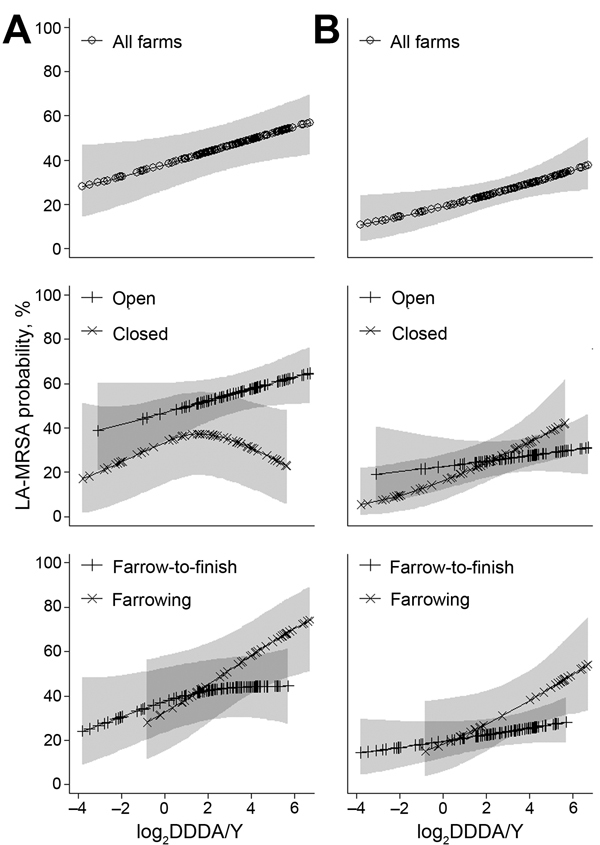Figure 4.

Dose–response relationships between antimicrobial use (log2 DDDA/Y) and livestock-associated methicillin-resistant Staphylococcus aureus (LA-MRSA) predicted probabilities in pigs (A) and humans (B), the Netherlands, 2011–2013. Splines were obtained from generalized additive mixed models with random intercepts for farms in the analysis for pigs and humans. Models accounted for the repeated measurements design and were adjusted for age group of pigs and for animal contact (i.e., hours worked) for humans. DDDA/Y was determined by dividing the total number of kilograms treatable with a single mass unit of the antimicrobial drug concerned, in accordance with the package insert information, by the average number of animal kilograms on the farm. Farms were defined as open when they received external supplies of gilts ≥1 time per year from at least 1 supplier and as closed when they received no external supply of gilts. p values and maximum-likelihood (ML) scores for the splines in the models for pigs: all farms (p = 0.03; ML 1433.5); open farms (p = 0.09; ML 991.3); closed farms (p = 0.09; ML 407.9); farrowing farms (p = 0.02; ML 438.5); farrow-to-finish farms (p = 0.39; ML 936.5). p values and ML scores for the splines in the models for humans: all farms (p = 0.01; ML 573.9); open farms (p = 0.41; ML 337.8); closed farms (p = 0.01; ML 229.9); farrowing farms (p = 0.03; ML 170.3); farrow-to-finish farms (p = 0.17; ML 398.2). DDDA/Y, defined daily dosages per animal per year; ML, maximum likelihood. Shaded areas indicate 95% CIs.
